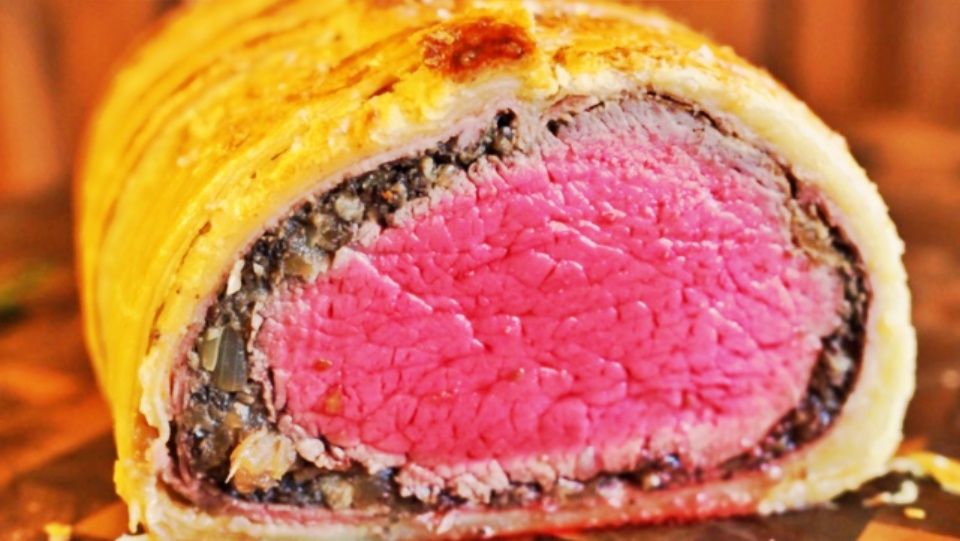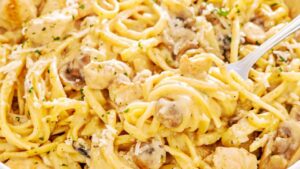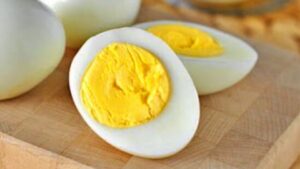Beef Wellington Recipe
Beef Wellington Recipe: A Gourmet Enchant for Uncommon Occasions
Beef Wellington is one of the most famous and lavish dishes in the culinary world. Known for its wealthy flavors and noteworthy introduction, this dish combines delicate meat filet, a layer of hearty mushroom duxelles, savory prosciutto, and a buttery puff cake outside. Whereas it’s frequently related with fine eating and uncommon celebrations, planning Meat Wellington at domestic is not as it were achievable but too profoundly fulfilling. With cautious arrangement and consideration to detail, you can make a showstopping centerpiece that will take off your visitors in awe.
This direct strolls you through the prepare of making Meat Wellington from scratch, advertising tips, strategies, and bits of knowledge to guarantee success.

Ingredients for Hamburger Wellington
For the Hamburger Wellington:
1 (2-pound) meat tenderloin
1 tablespoon olive oil
Salt and crisply ground dark pepper, to taste
2 tablespoons Dijon mustard
8 ounces cremini or button mushrooms, finely chopped
1 tablespoon unsalted butter
2 cloves garlic, minced
1/2 teaspoon new thyme leaves
12 lean cuts of prosciutto
1 sheet of puff baked good, defrosted if frozen
1 egg, beaten (for egg wash)
Optional garnish:
Fresh thyme sprigs or rosemary
A sprinkle of ruddy wine lessening sauce
Beef Wellington Recipe
Step 1: Planning the Meat Tenderloin
Trim and season the meat: Start by trimming any overabundance fat or silverskin from the meat tenderloin. Season the meat liberally with salt and crisply ground dark pepper on all sides.
Sear the meat: Warm a tablespoon of olive oil in a huge skillet over tall warm. Once the oil is shining, burn the meat on all sides until it’s equally browned. This step locks in the juices and upgrades the flavor of the meat.
Tip: Don’t skip this step, as it makes a flavorful hull that contrasts delightfully with the delicate interior.
Cool and coat with mustard: Once the meat is burned, expel it from the skillet and let it cool on a plate. After it has cooled marginally, brush it all over with Dijon mustard. This layer includes tanginess and makes a difference the mushroom blend adhere.

Step 2: Making the Mushroom Duxelles
Chop the mushrooms finely: You can utilize a nourishment processor to finely chop the mushrooms or do it by hand for a more rural texture.
Cook the mushrooms: In the same skillet utilized for burning the meat, soften a tablespoon of butter over medium warm. Include the chopped mushrooms, minced garlic, and new thyme. Cook until the mushrooms discharge their dampness and the blend gets to be dry, mixing occasionally.
This step is significant to avoid a soaked cake later.
Cool the duxelles: Exchange the cooked mushroom blend to a plate and permit it to cool completely.
Step 3: Collecting the Layers
Lay out the prosciutto: On a huge piece of plastic wrap, lay the cuts of prosciutto somewhat covering to frame a rectangle.
Spread the duxelles: Equitably spread the cooled mushroom blend over the prosciutto.
Wrap the hamburger: Put the Dijon-coated hamburger tenderloin on one edge of the prosciutto. Utilize the plastic wrap to carefully roll the hamburger, encasing it in the mushroom-covered prosciutto. Turn the closes of the plastic wrap firmly to secure the shape. Refrigerate for at slightest 30 minutes to firm up the roll.
Step 4: Wrapping in Puff Pastry
Prepare the cake: On a delicately floured surface, roll out the puff cake into a rectangle huge sufficient to completely encase the beef.
Wrap the hamburger: Expel the hamburger from the plastic wrap and put it on the cake. Brush the edges of the baked good with beaten egg to offer assistance seal it. Overlay the cake firmly around the meat, trimming any overabundance. Seal the creases and put the roll seam-side down on a preparing sheet lined with material paper.
Decorate and chill: If craved, utilize the baked good scraps to make enhancing designs on best of the Wellington. Brush the whole cake with egg wash for a brilliant wrap up. Chill the collected Wellington in the fridge for another 20–30 minutes.
Step 5: Baking the Beef Wellington
- Turn the oven on to 400°F (200°C) to preheat it.
- Bake to perfection: Place the Wellington on the middle rack and bake for approximately 25–30 minutes for medium-rare, or longer if you prefer your beef more well-done.
- Tip: Use a meat thermometer to ensure accuracy. The internal temperature should read 125°F (51°C) for medium-rare when removed from the oven.
- Rest before slicing: Allow the Wellington to rest for 10–15 minutes after baking. This helps the juices redistribute, preventing them from spilling out when sliced.
Step 6: Serving and Garnishing
- Slice with care: Use a sharp serrated knife to slice the Beef Wellington into even portions. The cross-section should reveal layers of golden pastry, savory prosciutto, and perfectly cooked beef.
- Plate and garnish: Serve slices on individual plates or a large platter. Garnish with fresh thyme or rosemary for an elegant touch. Pair with a drizzle of red wine reduction or a creamy horseradish sauce for added flavor.

Tips for Success
- Use high-quality ingredients: Since Beef Wellington relies on a few key components, invest in good-quality beef tenderloin, fresh mushrooms, and buttery puff pastry.
- Work quickly with puff pastry: Keep the pastry chilled to prevent it from becoming too soft or sticky.
- Plan ahead: Prepare the components in advance to streamline the assembly process on the day you plan to serve the dish.
Beef Wellington isn’t just a dish—it’s a culinary masterpiece. Its layers of texture and flavor make it a standout option for celebratory meals, whether it’s Christmas dinner, a romantic anniversary, or a dinner party with friends. While it requires attention to detail, the process of making Beef Wellington is as rewarding as the dish itself.
When you slice into that golden pastry and see the beautifully cooked beef encased in its savory layers, you’ll know the effort was worth it. With practice and patience, you’ll master this timeless classic and create a dish that’s as impressive as it is delicious. Bon appétit!




































